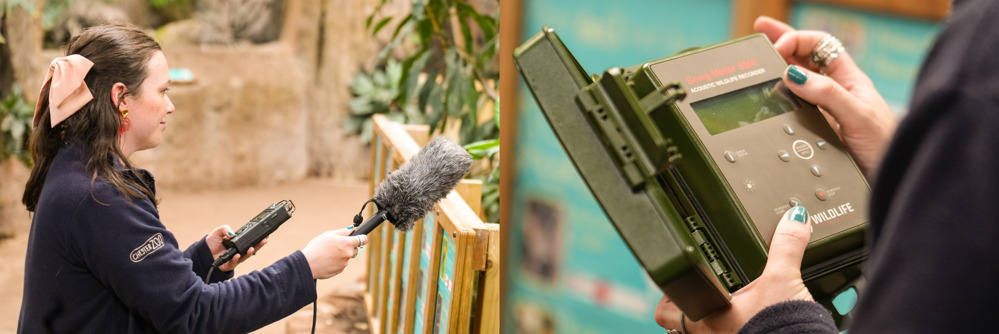
Breaking the birdsong code
A Chester Zoo scientist has contributed to an intriguing University of Manchester study of bird language
An aspect of birdsong works the same way as human speech, scientists have found.

Rebecca Lewis, a Conservation Scientist at Chester Zoo, contributed to a paper called "Does Zipf’s law of abbreviation shape birdsong?" published in the journal PLoS Computational Biology yesterday.
The article, authored by Tucker Gilman, CD Durrant and Lucy Malpas and Rebecca, explored whether birdsong followed a pattern found in all human languages.
This is the tendency for frequently used words, like 'a', 'the', 'yes' and 'no' to be short, while less often used words are longer.
The researchers found that while not every bird species studied followed this tendency, the majority did, and the law of abbreviation was clearly demonstrated in the data taken as a whole.
We know that birds and humans share similarities in the genes and brain structures involved in learning to communicate but this is the first time we’ve been able to detect a consistent pattern of ZLA across multiple bird species. There’s still a lot more work to be done but this is an exciting development.
Lead author Tucker Gilman - University of Manchester
The researchers developed new method for studying ZLA in birdsong that focuses on how often individual birds use certain note types and how long those notes last.
They applied this method using a new open-source computational tool called ZLAvian, which compares real-world observed patterns to simulated ones to determine if ZLA is present.
Studying ZLA in birdsong is far more complex than in human language. Birds often have very few note types, individuals even within the same species can vary widely in their repertoires, and classifying notes is tricky too. Our research has taught that it’s important to look across a wide range of species when looking for language patterns.
Rebecca Lewis, Conservation Scientist at Chester Zoo
You can find more information about the study on the University of Manchester website or read the paper here.
Rebecca added that the ZLAvian software could make research into Zipf's law of abbreviation more straightforward, and that more animal communications could be analysed in future.